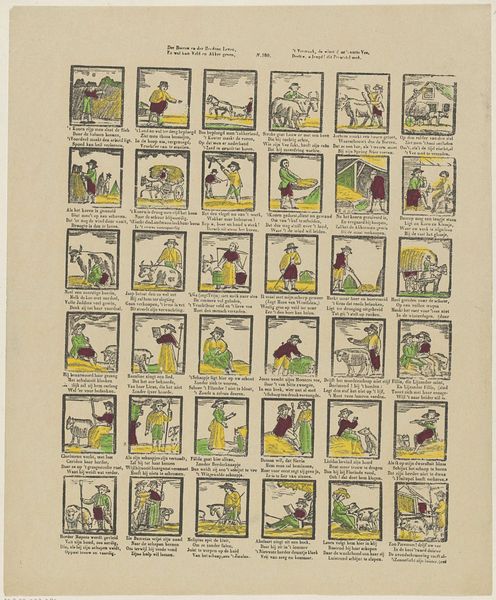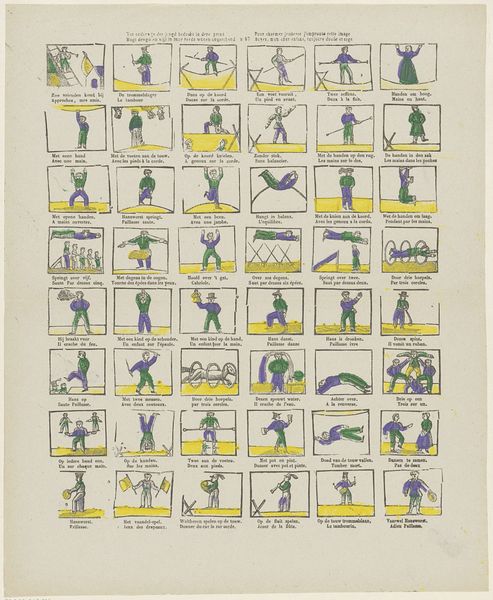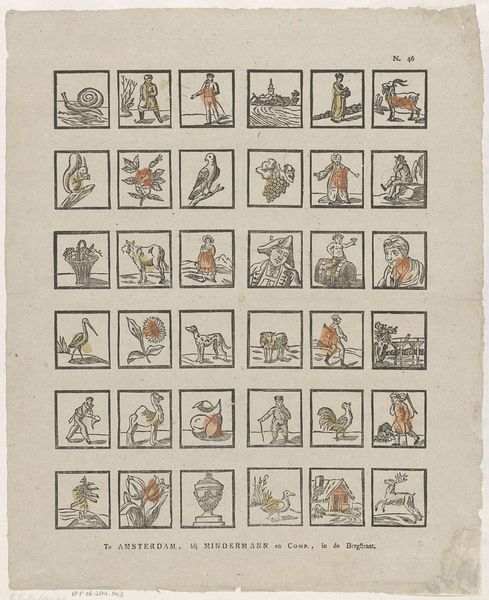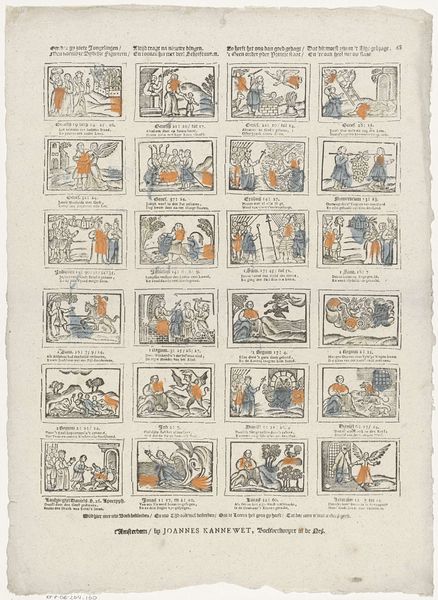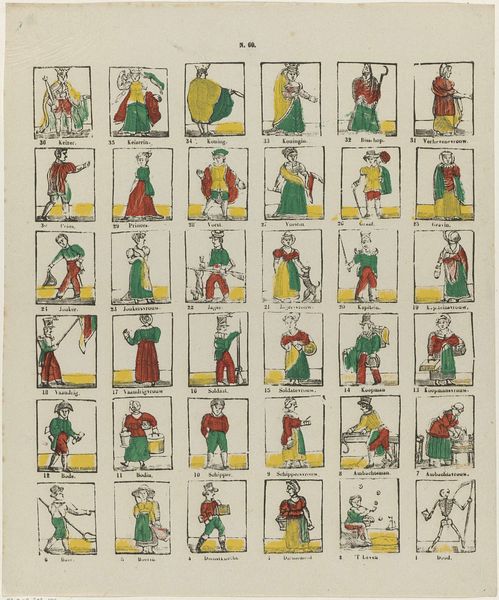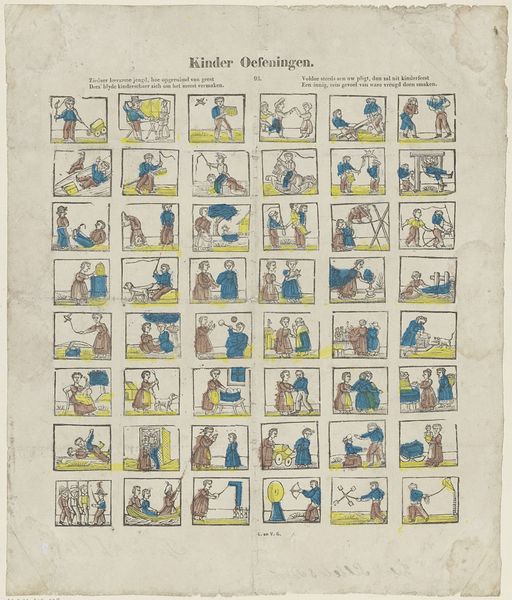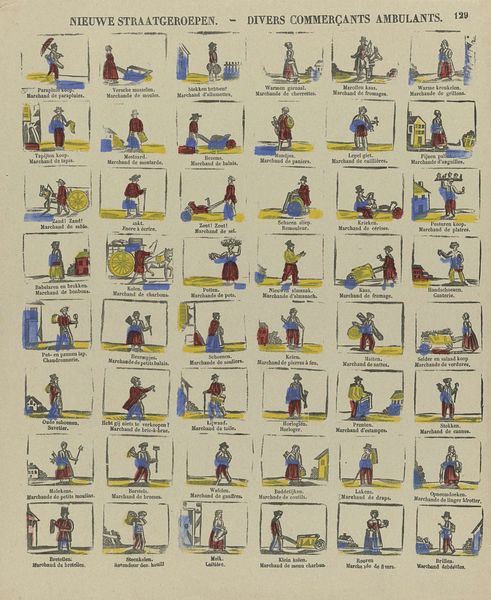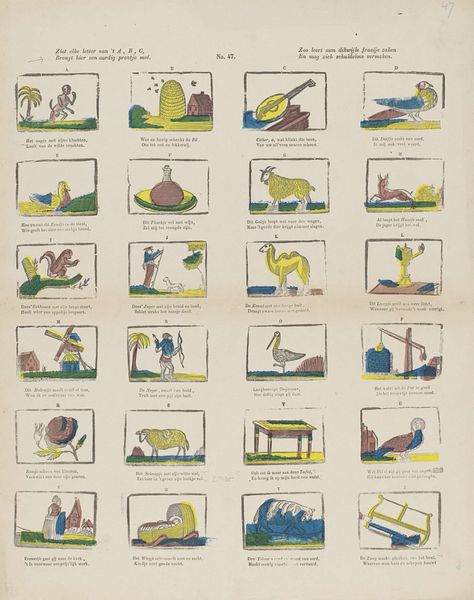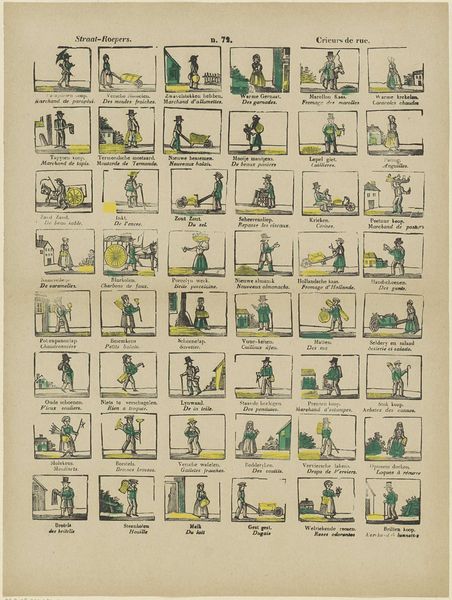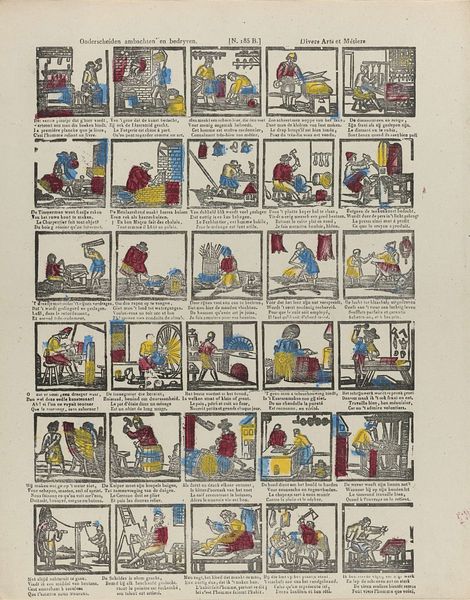
Een nuttig allerlei kan hier uw oog bekijken, / Hier ziet gy dieren, maar ook menschen, die u lijken. / Gij kunt hier met vermaak een uurtje bij passeeren, / En van hetgeen gij ziet wat nut en goed is leeren c. 1822 - 1849
0:00
0:00
print, engraving
#
narrative-art
# print
#
folk-art
#
genre-painting
#
engraving
#
miniature
Dimensions: height 395 mm, width 312 mm
Copyright: Rijks Museum: Open Domain
This teaching sheet, made by Jan de Lange II in the early 19th century, is a woodcut printed with two colors on paper. These educational prints were common at the time and used a simple, accessible medium to convey moral messages. The graphic quality of the woodcut—its stark lines and flat blocks of color—belies a labor-intensive process. Each color required a separate block, carefully carved and aligned for printing. The choice of this relatively inexpensive method speaks to a desire to reach a broad audience, using the readily available technology of the printing press. Looking closely, we see a world of familiar objects and figures, each paired with a rhyming couplet. This fusion of image and text reflects a broader cultural impulse to categorize and understand the world through visual and linguistic systems. It's a fascinating example of how art, education, and commerce intertwined in the 19th century. The artist acted as a bridge between the traditions of craftsmanship and the emerging world of mass production and consumerism.
Comments
No comments
Be the first to comment and join the conversation on the ultimate creative platform.
